In this article, you’ll learn what is cams and followers? And its types, nomenclature, working, application, and more with diagrams.
Also, you can download the free PDF file of this article at the end of it.
Cam and Follower
Cam and follower are a pair of higher links used to move links directly or periodically. It is used to decrease the degree of error. In the third century, the device known as the cam was produced by Hellenistic water-powered automata.
Cams and followers mechanisms are primarily used in the internal combustion engine to operate the valves. Also, the cam and follower mechanism is often used by engineers as a part of the I.C.E timing system. Although, this mechanism is employed in the automotive industry to operate fuel pumps.
This mechanism is formed by combining three members. A driving member is called the cam, a frame that holds the cam and the follower. The follower is controlled by the frame, and finally, the driven member is specified as the follower.
Read Also: Different Types of Springs and Their Applications
What is a Cam?
The cam is a rotating part that provides reciprocating or oscillating motion to the follower by direct contact. This part is essentially used to change the movement from the rotary to linear.
It is a part of a machine that is a revolving electric wheel or a shaft that hits a lever at several points on its circular path. It is widely used in a steam hammer as a simple tooth to transform pulses of power into a steam hammer.
Types of Cams
Following are the types of cams, which are explained below:
- According to the shape of the cam
- Wedge or flat cam
- Disk or Plate cam
- Spiral cam
- Cylindrical cam
- Heart-shaped cam
- Translating cam
- Snail drop cam
- Conjugate cam
- Globoidal cam
- Spherical cam
- According to the follower movement of the cam
- Rise return rise
- Dwell rise dwell return dwell
- Dwell rise return dwell
- According to the manner of the constraint of the follower
- Preloaded spring cam
- Gravity cam
- Positive drive cam
Read Also: Different Types of Couplings and Their Working [Explained]
#1 Wedge or Flat Cam
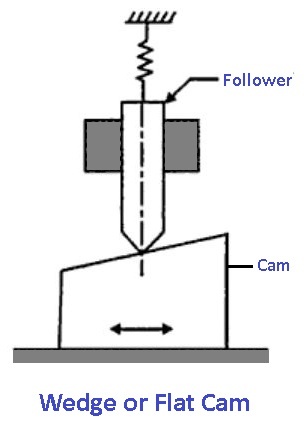
The wedge or flat cam has a straight shape to provide a specific movement of the followers.
#2 Disc or Plate Cam
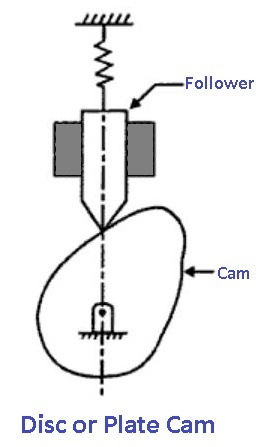
The disk or plate cam does not have a straight shape to give a specific movement to the follower.
#3 Spiral Cam
The spiral cam consists of a semi-circular or a spiral shape groove contour. The cam travels in a reciprocating movement, and the follower moves perpendicular to the axis of the cam.
#4 Cylindrical Cam
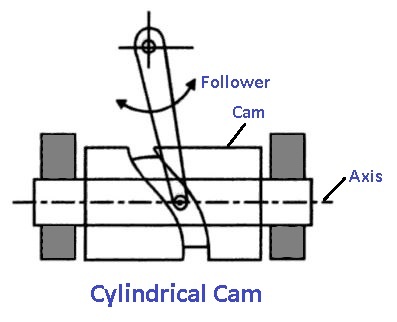
In cylindrical cam, it consists of a groove in a cylindrical surface, and the follower moves on a cylindrical surface parallel to the axis of the cylinder.
#5 Heart-shaped Cam
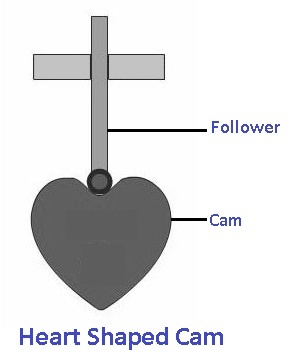
The heart-shaped cam seems like an asymmetric heart. It is essentially used to turn a shaft to keep the cam in a defined position by its pressure from a roller.
#6 Translating Cam
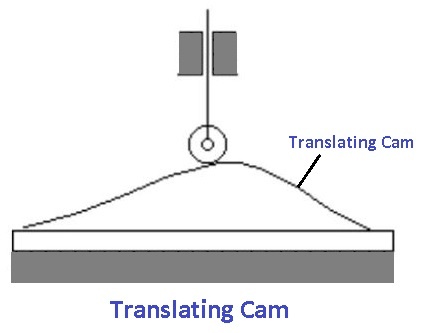
The translating cam consists of a groove or contour plate, and the follower oscillates in front of the plate. The groove or contour plate specifies the movement of the follower.
#7 Snail Drop Cam
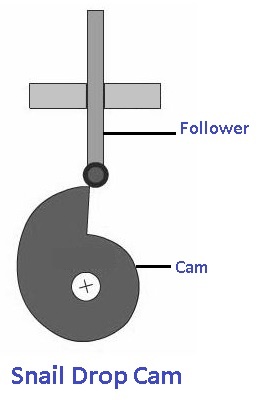
The snail drop cam is used in a mechanical timekeeping clock so that the daytime advance system could run at exactly midnight and involve a follower for more than 24 hours by the cam in a spiral path. It is ended with a sharp cut-off. The follower will drop down and activate the day in advance.
#8 Conjugate Cam
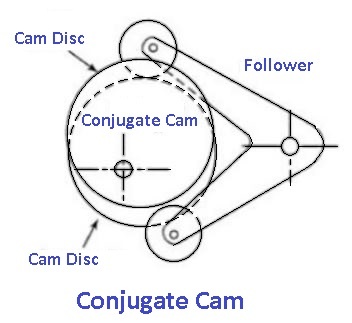
The conjugated cam has a mechanism with two separate oscillating rollers. The followers as a conjugation measuring fixture. When the cam revolves, the change of the suboptimal angle between the two follower arms may indicate the variation of the cam profile errors.
#9 Globoidal Cam
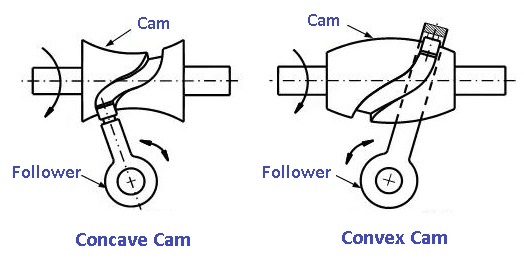
In shape terminology, the globoidal cam is one of the most complex cams. The working surfaces of the globoidal cams are the contacting surfaces with the roller surfaces.
#10 Spherical Cam
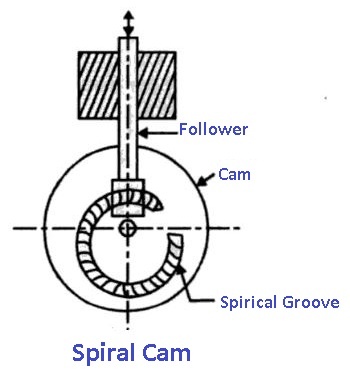
The spherical cam mechanisms are an alternative to bevel gears, as they provide less back-lash and fewer friction losses.
Checkout: 14 Types of Washers & How They Use? [Pictures & PDF]
What is a Follower?
The follower is a rotating or oscillating element of a machine that follows the movement of the cam by direct contact. When a cam travels in reciprocating movement, the follower moves parallel to the cam axis.
It is a part of the machine that is principally following a cam that can reciprocate or oscillate in movement. This converts the rotary movement of the cam into reciprocating or oscillating motion.
Types of Followers
Following are the types of followers, which are described below,
- According to the shape of the follower
- Roller follower
- Knife edge follower
- Flat-faced follower
- Spherical follower
- According to the movement of the follower
- Reciprocating follower
- Oscillating follower
- According to the line of movement of the follower
- Radial follower
- Offset Follower
Read Also: Major Types of Fasteners | Their Uses & Examples
#1 Roller Follower
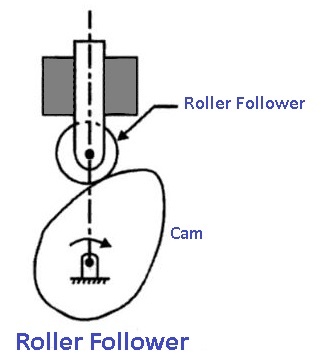
The roller follower is essentially used in high-speed operations. It is because it holds smooth contact with the surface. In addition, It has less wear and tear than the other followers.
#2 Knife Edge Follower
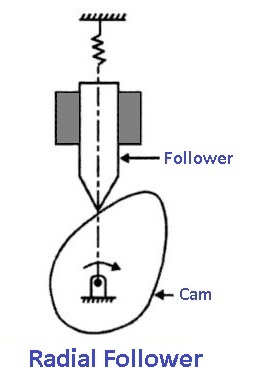
These types of followers have a sharp area of contact with the cam. It is the simplest among all followers. Radial followers are not employed in the case of fast application, as it has a sharp edge.
#3 Flat-faced Follower
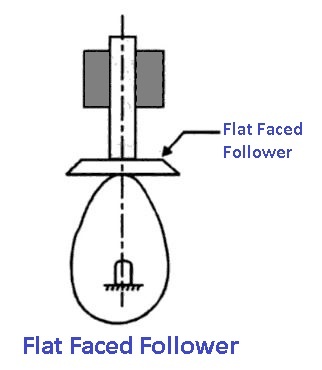
The flat-faced follower looks similar to a flat surface with an irregular cam. In this, the cam is utilized when space is limited, and this follower can hold more thrust. This follower can also be applied in a specific application.
#4 Spherical Follower
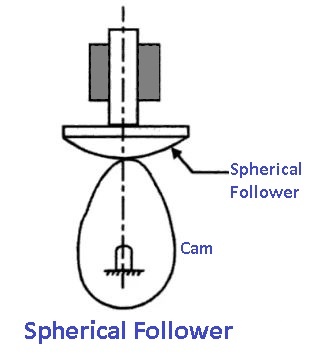
The spherical follower consists of a curved or regular follower as well as a cam. This is a modification of a flat-faced follower.
#5 Reciprocating Follower
In this type of follower, as the cam rotates, the follower reciprocates or changes into the guide.
#6 Oscillating Follower
The oscillating follower is placed at a proper point on the frame and oscillates. Thus, the cam causes the rotary motion.
#7 Radial Follower
The radial follower is used when the line of movement of the follower passes through the center of rotation of the camshaft. It is in a reciprocating motion.
#8 Offset Follower
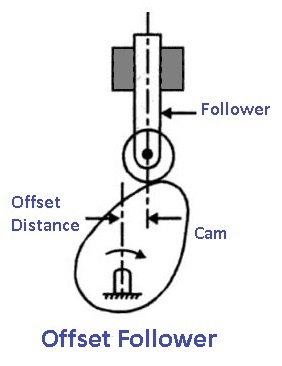
The offset follower is used when the line of motion of the follower is offset from the center of rotation of the camshaft.
How Do Cams and Followers Work?
Working of Cam
The cam is a mechanical element that is a revolving wheel about the short axis of the follower. Or in simple words, the cam is a mechanical element that reciprocates, oscillates, or makes a linear motion to the follower.
The shape of the cam is usually an oval or incomplete circle or eclipse. If an engineer considers an oval-shaped cam, he or she can observe movements that will create an external load, which is periodic for its location.
This external burial is very useful and effective for tasks that are periodic mechanical. Single and multiple head cams are the two types of the head cam.
Working of Follower
A follower is a mechanical element with respect to which the cam rotates in an oscillating or circular motion. The follower prevents the push and pulls of the cam. The followers are used to transfer the movement to the required machine part.
The mechanism for the cams and followers depends on each other. The follower revolves in an oscillating or circular arc.
The cams and followers mechanism is necessary for the engineering field. It has many different functions for different machines.
Read Also: What are the Different Types of Fits Used in Metrology?
Nomenclature or Terminology of Cam
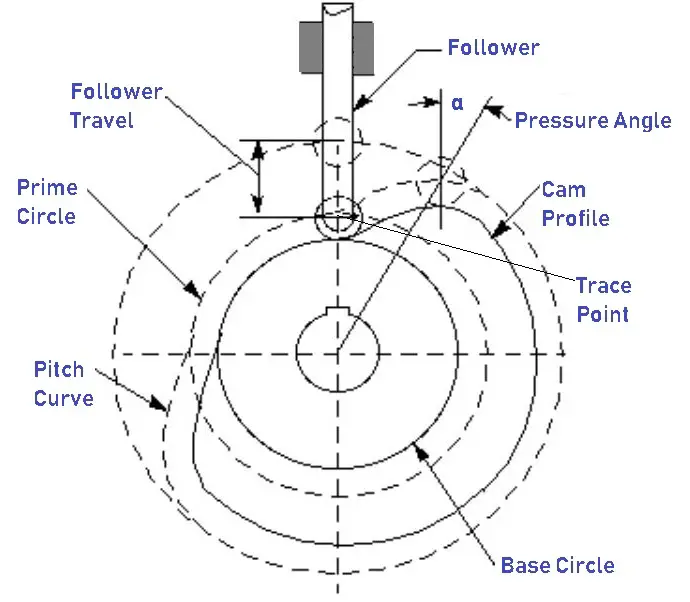
Following are the terms used in the terminology of cam:
- Cam profile
- Base circle
- Pitch curve
- Trace point
- Pressure angle
- Pitch point
- Pitch circle
- Prime circle
#1 Cam Profile
Cam profile is the surface area of a cam where the follower meets.
#2 Base Circle
This is the smallest circle of the cam profile formed from the center rotation of the cam.
#3 Pitch Curve
A Pitch curve is created when we assume that the cam is fine and the tracepoint of the follower rotates around the cam.
#4 Trace Point
With the help of a tracepoint, we can detect the cam profile.
#5 Pressure Angle
A pressure angle is created between the normal to pitch curve and the line of motion of the follower.
#6 Pitch Point
The pitch point is a point where the pressure angle is maximum.
#7 Pitch Circle
The pitch circle passes through the pitch point.
#8 Prime Circle
A prime circle is a circle drawn from the tangent to the pitch curve and concentric to the base circle.
Read Also: Why a Twist Drill is used? Its Types, and Nomenclature [PDF]
Why Need Cams and Followers?
In the department of mechanical engineering, the cam and follower mechanism represents a vital role in achieving uniform distribution of forces in a single machine element.
The automatic movement can be achieved by an engineer by attaching a cylindrical roller to a machine element. The Cam and followers can be used in machine elements with the size and shape of the nut. In addition, varieties of linear motions can be found using this mechanism.
Apart from that, the cams and followers mechanism can absorb a high amount of shock due to the greater thickness compared to other bearings, which increases the mechanical efficiency of the machine element.
Also, this mechanism is versatile in that it can be applied in a soda machine or aircraft applications. Furthermore, It is also used in conveyor belts.
However, flat followers are commonly used to operate the valves of an engine, while roller followers are used in oil and stationary engines.
Where are Cams and Followers Used?
Following are the applications of cam and follower:
- Cam and follower are used in the i.c engine to close and open the outlet and intake valve.
- It is also used as a hydraulic system. Because the mechanism is dependent on the fluid pressure.
- Cam and follower are employed in printing machinery for printing the screen.
- This mechanism is also helpful in textile machines for sewing and pulling the fabric.
- Used in screw pieces and Gear-Cutting types of machinery.
- Cam and follower are also applied in wall-clock and automatic lathe machine.
Conclusion
Cam and follower have a wide range of applications in manufacturing industries. I have covered all types of cam and follower with diagrams, hope you liked it. But, if you have any questions about this topic, you can ask me in the comments.
If you like this article, then please share it with your friends. Subscribe to our newsletter to get notifications of new posts.
Download the free PDF file of this post:
Check out these